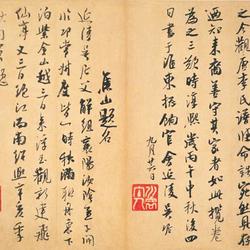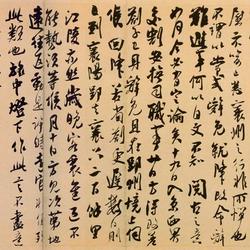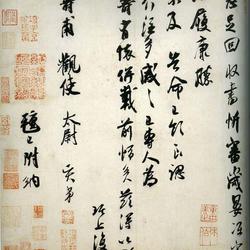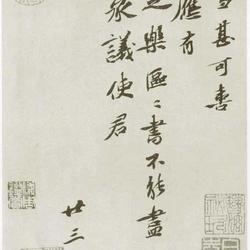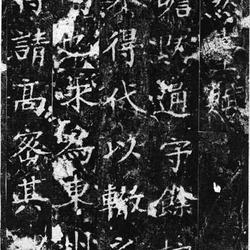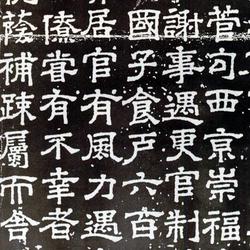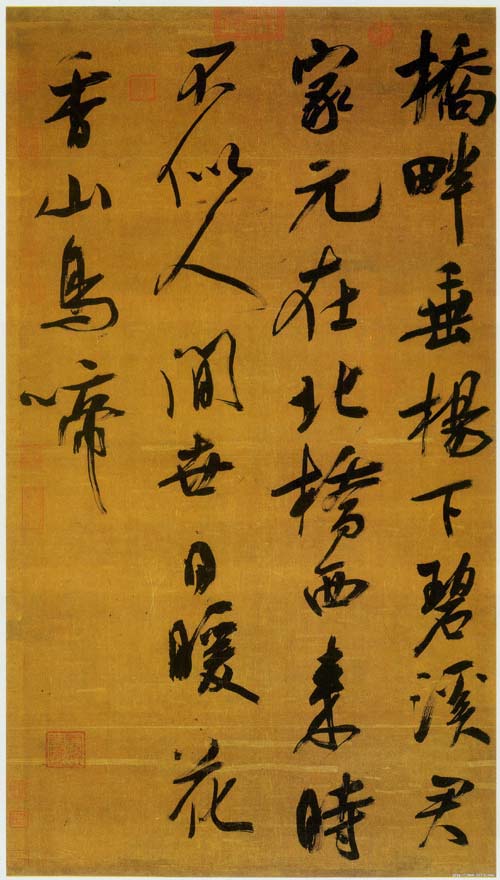
Wu Ju's "A Seven-Character Quatrain by Cai Xiang in Running Script" on silk, 98.6x55.3cm, collected by the National Palace Museum, Taipei
Explanation: The poplar tree hangs by the bridge and flows under the Bixi River. Jun Jiayuan is in the west of Beiqiao. When I came, it was not like the human world. The sun was warm, the flowers were fragrant, the mountains were chirping, and the birds were chirping.
This is one of Wu Ju's few ink writings. The poem "Seven Character Quatrains" comes from Cai Xiang's "Interview with Chen Chushi". It is Wu Ju's only extant large-character running script hanging scroll, and it is also the earliest hanging scroll seen today. Script in the form of an axis. Recorded in "The First Edition of Shiqu Baoji". There is no signature on it, only a seal of "Yun He Shu Seal". Some scholars believe that it may be one of a group of book screens. The large-character scroll is suitable for hanging and appreciation. The emphasis is on the coherence of the movement and the echo of the left and right upper and lower characters. Wu Ju's writing style on this scroll is faster and stronger than ordinary small characters, and the characters are tightly knotted. The posture is tilted sideways, and the upper and lower characters complement each other, which emphasizes the rice. The characteristics of Fu's running script are similar to those of Lu You (1125-1209) and Fan Chengda (1126-1193) at the same time, which shows the trend of the time. "Song and Yuan Academic Cases" mentions that Fan Chengda, Lu You and Wu Ju "introduced them as their teachers" "Friends", so they may also influence each other in calligraphy.
Wu Ju, courtesy name Jufu and nickname Yunhe, was born in Kaifeng, Henan. He was the nephew of Empress Wu, Emperor Gaozong of the Song Dynasty, but he cherished his reputation and was never arrogant over his relatives. Because he was good at poetry and calligraphy, he was highly appreciated by Emperor Xiaozong and was often called into the palace to discuss books and poetry. It is said that when Wu Ju was an official and stayed in Jiankang, he planted ancient plum blossoms everywhere and wrote calligraphy of Zhong Yao and the two kings every day to entertain himself. The surviving works are mainly from the last years of Chunxi to the early years of Shaoxi (1174─1194).
There is a sense of free and easy movement between the strokes in this work, and a free and unrestrained spirit arises smoothly with the flow of the brush strokes. Although there is no author's signature on the work, it is stamped with "Yunhe Jushi", so it is designated as Wu Ju. Wu Ju was good at calligraphy and studied Mi Fu. Because his calligraphy style was very similar to that of Mi Fu, he was praised by calligraphers of all dynasties. Su Dongpo once praised Mi Fu's calligraphy as "calm and lively". This sentence is also appropriate when used to evaluate Wu Ju's calligraphy. Regardless of the lines and structure, this work reveals a handsome, free and joyful look like Mi Fu, but it does not have the wanton and unruly habits seen in ordinary rice characters.
The appearance of this work is called a "banner", and its appearance is closely related to the appreciation preferences and changes in housing construction at that time. The transformation of calligraphy works from hand scrolls to vertical scrolls began to flourish between the late Southern Song Dynasty and the early Yuan Dynasty. This kind of banner was originally in the form of religious paintings or warning paintings, and was hung on the walls of indoor halls as an inspirational decorative effect. "Seven Character Quatrains" is the earliest cursive work in the form of a hanging scroll that has been seen so far.
Wu Ju (active in the second half of the twelfth century), named Jufu and named Yunhe, was born in Kaifeng, Henan. His birth and death dates are unknown. His father Wu Yi (1124-1171) was the younger brother of Empress Wu of Emperor Gaozong, and his mother was the eldest granddaughter of Qin Hui. Although Wu Ju was born into a relative, he was able to "cherish his reputation, fear his righteousness, and not be proud of Qi Wan". He once studied under Chen Fuliang (1137-1203), a scholar of the Yongjia School. In the ninth year of Qiandao (1173), he was specially awarded the general magistrate of Lin'an Prefecture (today's Hangzhou, Zhejiang). About the thirteenth year of Chunxi of Xiaozong (1186), he was in charge of the pay of the Huaidong army as an envoy. He resigned in the year) and became the magistrate of Ezhou (about the first year of Qingyuan year of Ningzong, 1195). Finally, he was appointed as the envoy of the Zhen'an Army to Jiankang and stayed behind, and he died with the posthumous title Zhonghui.
Wu Ju had many talents and was good at poetry. He wrote "Yunhe Ji", which unfortunately is not published today. "Si Chao Wen Jian Lu" recorded a seven-single poem "Xu Guangzong Ode to An Liu", and "Complete Song Ci" also included several poems. He was able to make ink bamboo, and "Tu Hui Bao Jian" recorded that he "tried to make ink bamboo slope stones, and the taste was good." Xiaozong not only respected him as his brother, but also admired his poetry and calligraphy. After Xiaozong's death, he was tabooed by Han Tuozhou and did not want him to serve in the court, so he was sent to serve as an official in another state. He had few other hobbies. He liked to amuse himself by copying ancient calligraphy. His calligraphy style was similar to that of Mi Fu, and some words were even mistaken for Mi Fu. For example, Dong Shi's "Huang Song Shu Lu" (preface 1242) quoted a friend's experience and said, : "Wu Ju Gong Bian Bang, Ezhu has the two characters "Yun", Ji Gong, and the word "Jiangshan", the best in the world, which was also written by him. The history has seen the two characters "Yun" on the couch script, and it was initially suspected that it was Yu Hu (Zhang Xiaoxiang)'s pride. The calligraphy can be roughly compared with the calligraphy of Baojin (Mifu) Qintai. It is also the most famous country in the world. Those who doubt the old calligraphy of Mi will only know that there is a calligraphy written by Ju when they get the records in the valley."

